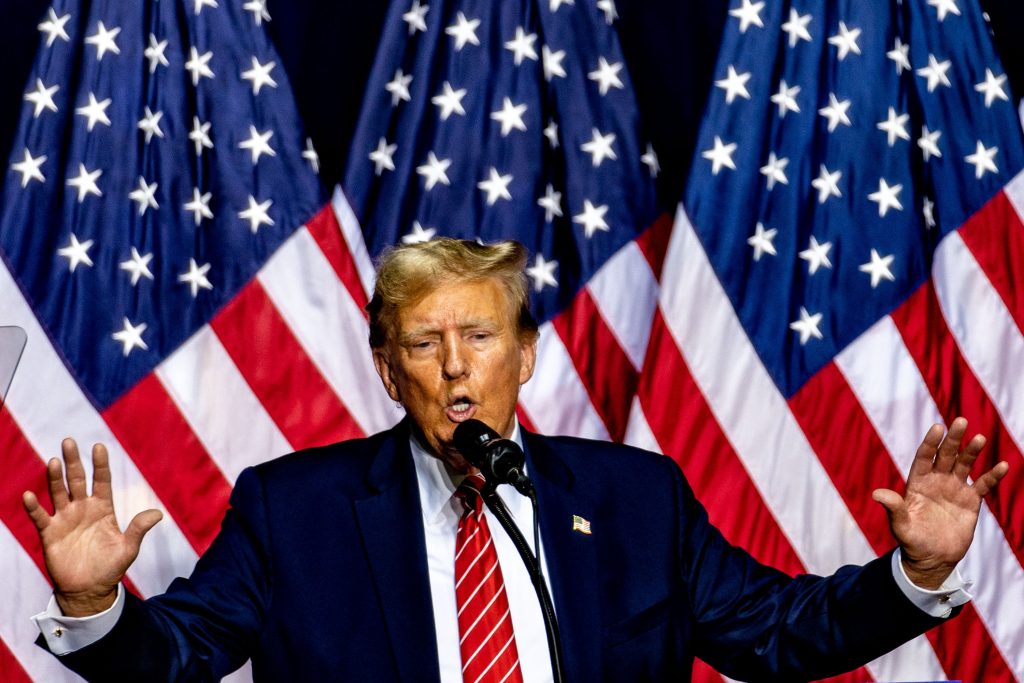
Trump is Looking to Change Marijuana Laws in the Us and It Could Have a Major Impact

America at a Crossroads: The Shifting Future of Cannabis
Half a century ago, the U.S. government placed marijuana in the strictest legal category available: Schedule I, alongside heroin, LSD, and MDMA. The classification meant cannabis was branded as highly dangerous, addictive, and lacking any medical value. For decades, this official stance shaped public perception and policy, fueling the war on drugs and closing the door on serious scientific research.
Yet fast forward fifty years, and the landscape looks almost unrecognizable. Cannabis dispensaries now operate openly on busy downtown streets, their neon leaf logos as familiar as coffee shop signs. Forty states allow medical marijuana use, and nearly half have legalized recreational use. Polls show that close to 70% of Americans support some form of legalization, a staggering reversal from the 1990s when public approval barely scraped 25%. What was once criminalized is now a multi-billion-dollar industry, employing hundreds of thousands and generating tax revenue for schools, healthcare, and infrastructure.
Still, the contradictions remain stark. In one ZIP code, cannabis businesses flourish openly; in another, a patient can be arrested for possession. The federal government continues to classify marijuana as a Schedule I drug—making research nearly impossible, forcing businesses to operate in cash, and leaving patients in restrictive states without access to medical treatment.
Now, with President Donald Trump suggesting that his administration may move marijuana from Schedule I to Schedule III, the legal and political tension could reach a breaking point. Such a move would not legalize recreational use, but it would mark the most significant federal reform in over fifty years—a turning point that could reshape medicine, commerce, and cultural attitudes toward cannabis.
A Nation in Transition
For decades, America’s cannabis policy has been a split-screen reality: states moving steadily toward legalization and regulation, while the federal government clings to prohibition. This tug-of-war has created what many legal scholars call a “patchwork of contradictions.” Businesses are taxed as though they are drug traffickers, scientists are forced to navigate endless bureaucratic hurdles, and patients in conservative states remain cut off from treatments widely available elsewhere.
Trump’s remarks suggest the stalemate may not last. Reclassifying cannabis to Schedule III would formally acknowledge that marijuana has recognized medical uses and a lower potential for abuse than hard drugs. Unlike Schedule I, which blocks any medical prescriptions, Schedule III substances—such as ketamine or anabolic steroids—can be prescribed, dispensed, and studied under federal law.
The shift would not just be symbolic. It would remove the legal handcuffs on research, offer financial relief to struggling cannabis businesses, and bring medical marijuana into the same framework as other controlled medicines. It would also signal that the federal government is finally beginning to align with the scientific evidence and public sentiment that have already changed the nation’s view of cannabis.

What Would Actually Change?
Medical Recognition
Doctors could prescribe cannabis for approved conditions, and licensed pharmacies could dispense it. This would bring marijuana under the same legal protections and regulatory systems as other medications, ensuring patients receive safer, more consistent products.
Research Expansion
Schedule I status has forced scientists to rely on outdated government-grown cannabis and limited studies. Moving to Schedule III would allow large-scale clinical trials—critical for understanding proper dosage, risks, and therapeutic potential. Researchers could finally investigate cannabis’ role in treating chronic pain, epilepsy, PTSD, and even cancer-related symptoms.
Tax Relief for Businesses
Right now, cannabis companies are trapped under IRS Code 280E, which bars them from deducting business expenses like rent, payroll, or marketing. As a result, effective tax rates often soar above 70%. Reclassification would allow businesses to operate like normal companies, unlocking capital for expansion, job creation, and community investment.
Banking and Investment Access
Reclassification wouldn’t automatically solve the banking problem, but it could encourage more financial institutions to work with cannabis companies. This would reduce reliance on risky all-cash operations and open the industry to larger-scale investment.
What Would Stay the Same
-
Recreational marijuana would still be illegal under federal law, even if states choose otherwise.
-
Interstate commerce of cannabis products would remain banned.
-
The DEA would continue oversight, requiring strict licensing and record-keeping.
In short, reclassification would narrow but not eliminate the divide between state and federal law.
The Promise and the Risks

Supporters say rescheduling would unleash long-stifled medical research, strengthen consumer protections, and help small businesses survive. For patients, it could mean safer, standardized access to cannabis through pharmacies instead of unregulated dispensaries. For communities, it could mean more stable tax revenue and reduced black-market activity.
But critics warn of unintended consequences. Federal recognition could create the impression that cannabis is completely safe, despite evidence that heavy or long-term use can cause memory problems, dependence, and even psychosis in vulnerable individuals. Studies show that daily cannabis use has risen fifteen-fold since the early 1990s, now surpassing high-frequency alcohol consumption. Without clear public education, reclassification might accelerate problematic use, particularly among young people.
Another challenge lies in international law: the United States is still bound by the 1961 Single Convention on Narcotic Drugs, which requires criminalization of non-medical cannabis. Reclassification might ease domestic restrictions but would not resolve U.S. treaty obligations, leaving the country walking a diplomatic tightrope.
Politics and the Path Forward

Trump has sent mixed signals on cannabis, sometimes voicing support for reform, other times siding with hardline prohibitionists. His willingness to consider Schedule III is seen as a political middle ground—a way to acknowledge medical value without fully embracing legalization.
The final decision, however, won’t rest solely with the president. It will involve the Department of Justice, the Department of Health and Human Services, and the Drug Enforcement Administration. Meanwhile, Congress remains divided: some lawmakers are pushing for full legalization or state autonomy, while others resist even modest reforms.
Still, the momentum is clear. With forty states already permitting medical use and twenty-four allowing recreational sales, the federal government may be forced to follow the lead of voters and state legislatures.
Why It Matters for Everyday Americans

For millions of Americans, this isn’t just a legal debate—it’s personal.
-
Patients struggling with chronic illness could finally access doctor-prescribed cannabis without risking criminal penalties.
-
Small businesses could keep their doors open, reinvest in their communities, and hire more staff.
-
Local governments could see steadier tax revenues to fund schools, infrastructure, and healthcare.
-
Individuals with past convictions could benefit from future reforms tied to reclassification, such as expungement of low-level offenses.
-
Consumers would gain safer, more transparent products with standardized labeling and quality control.
A Defining Moment
Marijuana’s story in America has always been about more than a plant. It has been a test of how society defines risk and freedom, law and science, punishment and opportunity. For over fifty years, federal policy has been frozen in an era of fear-driven politics and outdated research.
Rescheduling marijuana to Schedule III would not end the debate. But it would turn the page, signaling that evidence matters, medical value counts, and policy can evolve. The real question is whether the U.S. is ready to balance access with caution, correct past injustices, and build a fair, regulated framework for the future.
The road ahead will be contested, uncertain, and far from perfect. But at this crossroads, the choice is clear: cling to outdated laws that no longer reflect reality—or take a step, however cautious, toward the future Americans are already living.
News in the same category


Decode the secrets behind human fingerprints.

Ch!lling simulation shows what actually happens to your body when you d!e

Scientists issue warning for surprising item people use that's 40 times dirtier than a toilet seat

Scientists reveal what your favorite way to eat eggs really says about you

Truth behind 5,000-year-old Stonehenge mystery as scientists reveal how it was actually built

New report reveals exactly which professions are most at risk from AI takeover in the next five years

12 Small Habits That Could Be Ruining Your Home

Are Brown Recluse Bites Really That Dangerous? Here’s What You Should Know

Blue Stop Signs: What Do They Mean?

16 Subtle Clues Your Partner May Not Be Loving You as You Deserve

15 Phrases You Should Never Tell a Man to Avoid Tension

The UK Has Created a Robot Fish That Eats Ocean Plastic and Powers Itself by Digesting It, Eliminating the Need for a Battery

MrBeast finally reveals his net worth after admitting how much is in his bank account live on stream

Influencer trapped in one of the most remote places on Earth faces brutal fine as legal fate is revealed

Texas announces major plan to fight flesh-eating flies as they prepare to descend on the US

The Volume Buttons on Your iPhone Have Countless Hidden Features
Your iPhone’s volume buttons may seem simple, but they’re packed with powerful, time-saving shortcuts. From snapping perfect photos without touching the screen to activating emergency calls in seconds, these “secret” tricks can make your iPhone ex

The reason dogs often chase and bark some people but not others
While dogs are often called “man’s best friend,” not every interaction starts with a wagging tail. Sometimes, a dog will bark, growl, or even run after a person — and the reasons go far deeper than simple playfulness.

Can You Find the Hidden Pipe? Only 2% Can!
News Post

Tibremciclib for Advanced Breast Cancer: Is It Worth It?

Pluvicto vs ARPI in Prostate Cancer: Is One Better?

Does Chest Pain Always Mean a Heart Attack?

10 Tasty Snacks Packed With Good-for-You Carbs

Pokeweed: The Attractive but Highly Toxic Plant Growing in Your Backyard

Goosegrass: Health Benefits and Uses

The Powerful Health Benefits of Lipton, Cloves, and Ginger Tea Every Woman Should Know

Drink this before bed to balance blood sugar & stop nighttime bathroom trips!

This vegetable oil linked to “aggressive” tumour growth, study finds

The Miracle Tree: 16 Health Benefits of Moringa & How to Use It

Clove Collagen Gel : Night Gel For A Smooth & Tight Skin

Transform your skin with fenugreek seeds

8 Natural Remedies to Cure Sinus Infections Without Antibiotics

Watch – Mexico City is Converting Highway Pillars Into Vertical Gardens to Clean the Air and Beautify the City

The Best Hair Growth Vitamins and Supplements to Fight Hair Loss

Foods to Eat if You Need to Poop – The Best Natural Laxatives to Relieve Constipation

The 4 vitamins this 87-year-old woman takes to stay aging (and you can too)

6 Powerful Castor Oil Benefits for Your Health and Wellness
